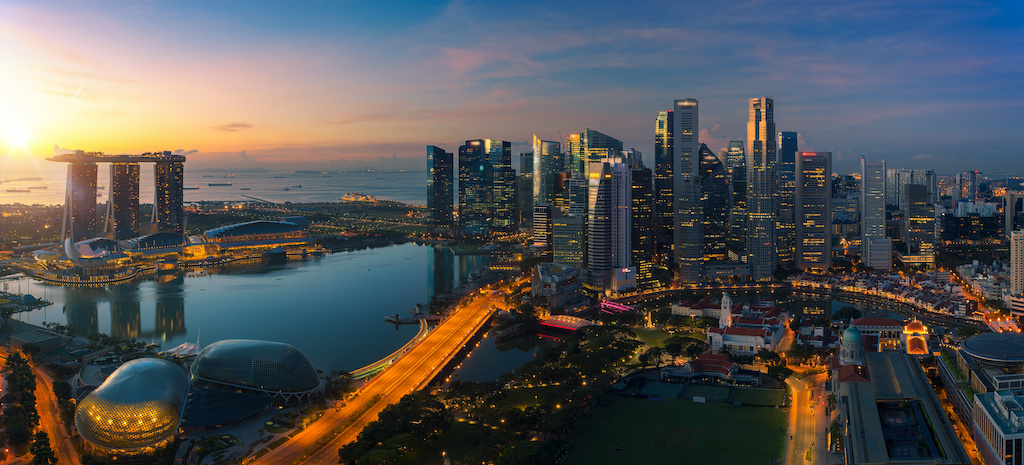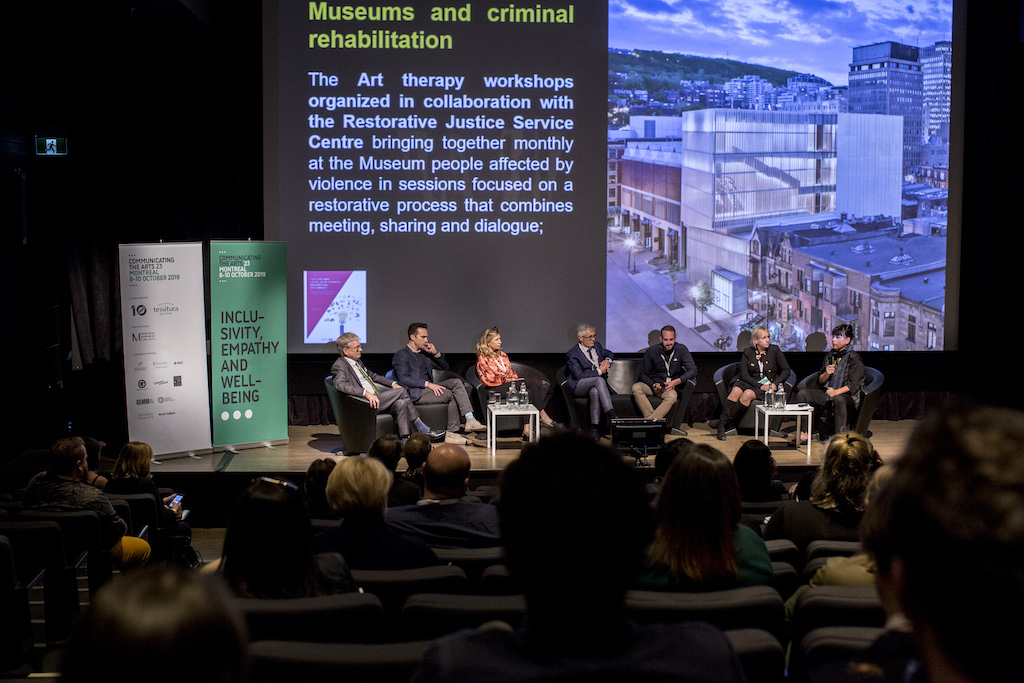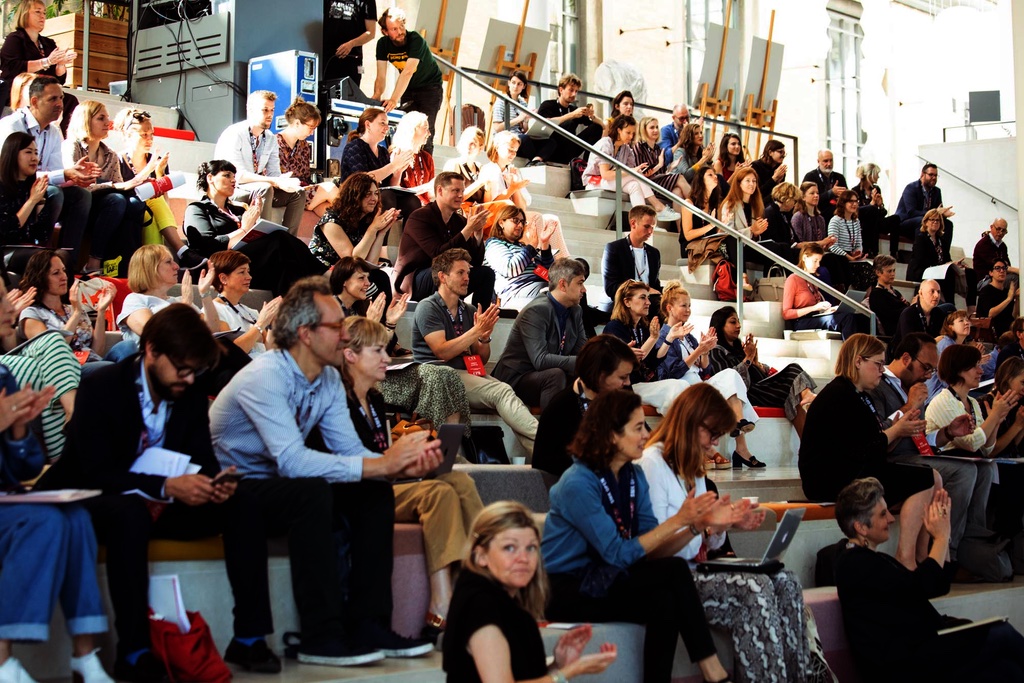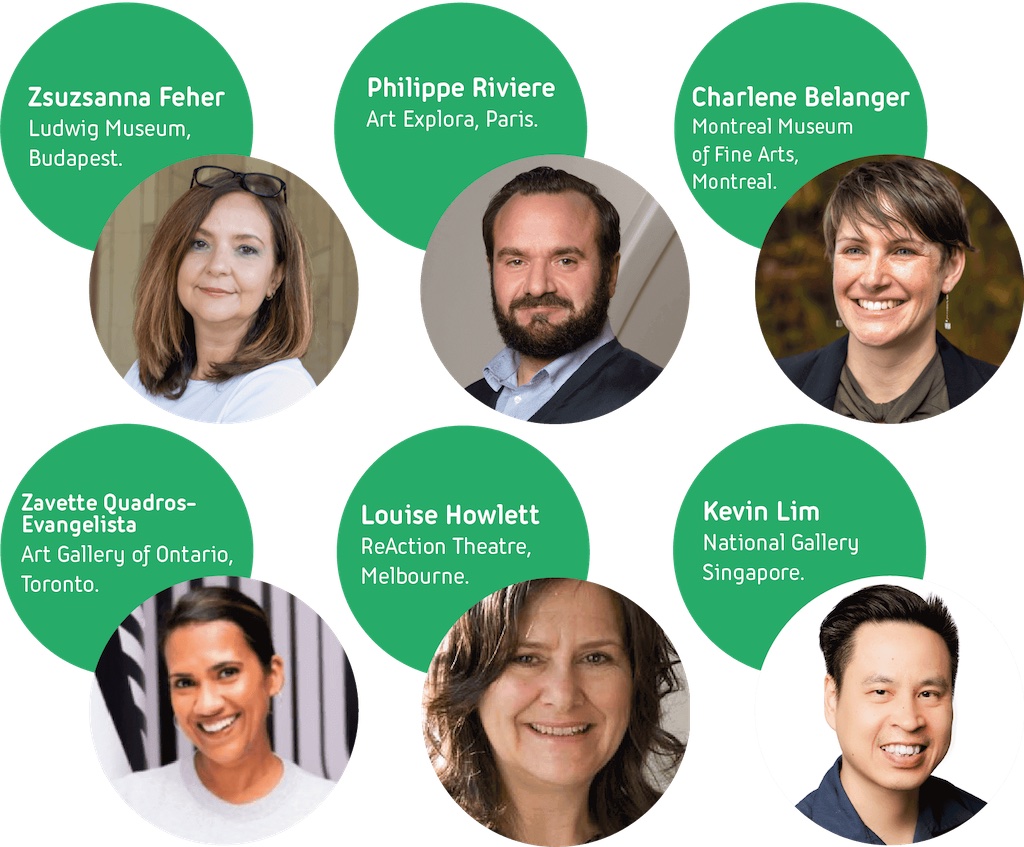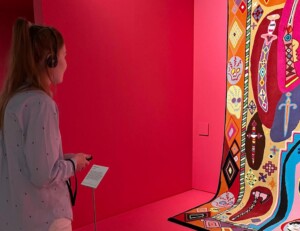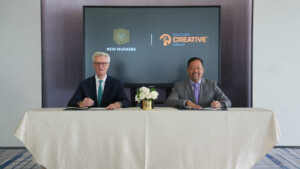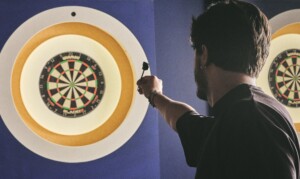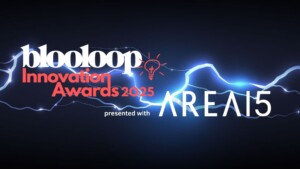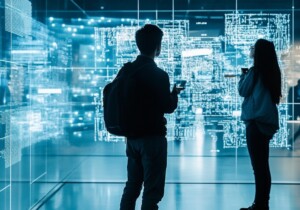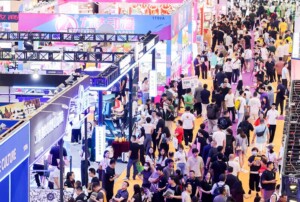Communicating the Arts (CTA) is a global network of enthusiastic and talented professionals who support the transformative power of culture. For almost two decades, CTA has functioned as a central point for communication experts from diverse fields such as visual and performing arts, social history, and heritage. This year, CTA will hold its 27th Annual Conference, Communicating the Arts 2023, in Singapore.
The theme of CTA 2023 is Arts + Technology. Ahead of the event, we speak to Duncan Bass, curator of media and technology at Singapore Art Museum (SAM), Rica Estrada, officer-in-charge of the visual arts and museum division at the Cultural Center of the Philippines, and Dr Natalia Grincheva, programme leader for the Arts Management degree course at LASALLE College of the Arts in Singapore.
Together, they discuss why Arts + Technology is a timely theme to be discussing right now. They explore some of the key trends in this area and their benefits and drawbacks, and reflect on what they are most looking forward to at this year’s CTA Conference.
CTA comes to Singapore in 2023
Firstly, in terms of the location for the 27th Annual Communication the Arts Conference, Bass says:
“I moved to Singapore because there’s a trajectory here, or an eagerness towards art and technology, and there’s an audience for it. But the kind of specialised knowledge, specifically in collections and conservation, doesn’t exist here the way that it does in some of the major museums in Europe or the US. So, I’ve been working here in a curatorial capacity to organise exhibitions that engage with technology both as a metaphor and also as a material.”
“I’m also focused on the permanent collection here, looking at how we approach collecting contemporary art and ensuring the preservation of historic forms of time-based or digital media.”
Singapore Art Museum was founded in 1996. It was the first art museum in Singapore and is a sister institution to the National Gallery Singapore.
“Our colleagues at the National Gallery take a more historical perspective, looking at modernism in Southeast Asia and Singapore. At SAM we’re taking a more global or international look at contemporary art, putting local and regional artists into dialogue with the global contemporary art world. We’re also contextualising advancements and art from all over the world for audiences in Singapore and Southeast Asia.”
Arts and technology
For the past decade, art and technology has been a huge topic. And it’s an important one for the sector to be talking about, says Estrada:
“My fellow museum workers and others in the art and culture field have a lot of questions about developing technologies. I think the intersection and cohabitation of technology and art is very interesting. There’s a lot of promise there, but there’s also a lot of concern. So, it is a good time to explore this theme at CTA 2023.”
Throughout the history of humanity, people have always been confronted with new developments and new technologies, says Grincheva:
“We’re constantly adopting new technologies. But talking about arts and technology is particularly relevant right now because the pandemic accelerated that development. Now, when we look at the speed of tech developments, it is so high that we as a society, and as institutions and museums, have a hard time coping with all the developments that are happening so fast and so rapidly.”
“There are many challenges and opportunities that new technologies can bring into the professional world and the social-cultural world. But people are not adapting to new technology at the same speed. That’s why I believe that this conference in particular will be a very important platform for all of us to get together and reflect on what has happened in the past several years.”
Context is important, adds Bass:
“The language is often that this is a new subject, but everything has a history. Artists have been working with new technologies since before the computer was invented. It’s important to put these sorts of new expressions of technology into the historical context. We can celebrate them because they are more prevalent, but they also have a specific history.”
The power of technology
Technology has the potential to transform the museum sector for the better. Outlining some of the positives, Estrada says:
“The first opportunity is to reach broader audiences, which is a common discussion in the museum field.”
“We can see how new developments are changing how audiences experience museums and helping institutions reach a more diverse visitorship,” agrees Grincheva. “They now have more open channels or communications on a global scale. Visitors can now have a more customised, more personalised experience, especially with the help of artificial intelligence. So, they are more engaged on a personal level.”
However:
“People can now communicate not only with other people or objects in the context of museums online, but they also have to communicate with nonhuman chatbots and artificial intelligence. This human and non-human communication is something new. I think many institutions don’t yet understand the consequences or the impacts of this human-computer interaction that is happening right now.”
Digital art and the crypto trend
Decentralisation is an interesting trend that could change the museum landscape, says Grincheva.
“Things like blockchain technologies have the potential to democratise and decentralise, and even eliminate cultural institutions that existed previously. For example, we see the rise of crypto artists right now, who are engaging with this environment without the agencies, art galleries and institutions that previously were fundamental in bringing them to the level where they become globally recognised or where they can sell their artworks.”
“We are seeing collaborative collectives of artists that do not need a museum to promote their work.
“Some of the people who are capitalising on new technologies the most are artists and artistic communities from the global south, where there is less infrastructure or money to support formal institutions or to create new museums.
“They are creating museums on new platforms, capitalising on what exists now in terms of digital technology to promote, share and preserve contemporary digital art. They are also decolonising and finding new ways to communicate value and knowledge and to develop new epistemic traditions that will challenge that traditional museum world.”
CTA 2023: technology behind the scenes at the museum
Another opportunity for technology is to help the work involved in running a museum, to simplify these procedures, or to help museum workers do these tasks better and faster, without sacrificing the core values of museology, adds Estrada, saying: “I think that is something institutions should explore and invest in.”
“I also think that technology can address long-standing issues within the museum sector, such as labour. How can we create a more equitable and open solution beyond statements and press releases? Is there a way to use technology to be more deliberate in terms of hiring and taking care of young workers and even audience support?”
“I’m interested in how artists are using technology in their work to be able to create work related to social justice, and even heritage protection and conservation. We have all of these really serious issues going on in the world and a lot of heritage and art is getting lost or destroyed or stolen.
“I’m interested in seeing how artists can use tech to try to slow this down or find ways to conserve things for future generations to be able to enjoy.”
Digital also generates a lot of data:
“We are becoming better equipped with evidence, which is generated constantly,” says Grincheva. “This data can be used by museums to help assess their audiences and to gain a better understanding of their visitors. Data is becoming a critical aspect in understanding many aspects of audiences and in rebranding cultural collections, in digital preservation.”
Art helps people to understand new technology
Continuing the theme of audience engagement, Bass contends that museums also have a role in helping people understand new technologies:
“I work more with artists and on the curatorial side. So, I think about the way that technology functions as a metaphor and as a material foundation for some of the works.
“From a perspective as a curator who deals with this material, my goal was to treat it the same way that we might treat other complex and difficult-to-grasp things like history or politics, where the art allows you to hold these difficult ideas in your mind for a time and reflect on them in a meaningful way. Because they’re often kind of invisible to us.”
“So, being able to see something, even if that something is more of a placeholder that represents the whole, is a valuable way to at least begin understanding these complex ideas and complex systems.”
SAM recently opened an exhibition called Proof of Personhood: Identity and Authenticity in the Face of Artificial Intelligence. This is an exhibition that uses technology as both subject and medium in a lot of the works, says Bass:
“It explores a lot of the themes of artificial intelligence and machine learning, but also the way that identity is expressed and performed in digital settings, whether online or digitally. I think that anyone interested in technology as a presentation medium, in terms of immersive experiences, would be interested in it. But it also appeals to those who are more interested in engaging with the themes of technology and its role in contemporary society.
“The arts and museum sector has this ability to convey the complexity of these topics and to help people understand that they’re not all good or all bad and that things aren’t so black and white.”
The drawbacks of new technologies
In terms of some of the challenges presented by emerging technologies, Bass adds:
“Maybe it’s cliche, but I think that the opportunity that I just discussed is also the biggest challenge. These are big, complex and often seemingly invisible systems. So, finding an entry point for audiences who are inevitably going to have different degrees of familiarity with these things, becomes probably the biggest challenge for me, trying to present artworks and exhibitions that are meaningful for people who work in the field of machine learning or people who have only heard about AI through a headline in the newspaper.”
Another drawback is that technology can affect people’s attention span and their critical thinking, says Estrada:
“This is something important for museums since we are more traditional in the sense that you have to go there and experience things and absorb things.”
Arts and technology: exposing the digital divide
Grincheva also talks about the digital divide. Digital inequality means that not all audiences can connect to online museums and experience them to the full extent.
“There are two different digital divides,” she explains. “Firstly, in terms of infrastructure, there are still areas around the world with limited access or connectivity. Secondly, in terms of inclusion and social inequalities, research indicates that people with higher education degrees, those who have good jobs and those who do not have any disabilities are the people most likely to access this newly available digital museum content.”
“Digital literacy is another factor. Even though you might have an internet connection, and you might have access to resources, you won’t be able to enjoy them if you don’t know what is available. You might be living in your own bubble. It’s very difficult right now with algorithmic communications, where algorithms govern how each person consumes content online and can create barriers in terms of what kind of information can penetrate different audiences.
“It’s also important to question whether chatbots and AI can deliver the same level of communication as humans. There is this technological determinism, the idea that technology can save the world, but there are also limitations and biases. Many exciting new tools will impact how we experience museums. But we need to be aware of the drawbacks too.”
CTA 2023
Talking about this year’s event, Bass says:
“I think the strength is in the diversity of speakers and perspectives. We can look at the way that technology is approached in the museum sector both from the curatorial side and also in terms of audience engagement or education departments.
“I’m constantly learning from my colleagues here and at other institutions about how we can bring together these different aspects of engaging with technology across different departments so that it’s a more holistic experience and so that they enhance one another instead of potentially contradicting each other.”
“It’s not the usual museum conference crowd that I am familiar with,” says Estrada. “So, I’m looking forward to listening to the speakers and engaging with people from across the spectrum of arts and technology. I’m also really excited to be a speaker at CTA 2023 and to be able to present the Cultural Center of the Philippines, to talk about some of the things we are doing, and to get feedback.”
Diverse speakers
Grincheva, who is a member of the steering committee for CTA 2023 adds:
“I am so excited because I can see what’s happening behind the scenes, and how many things we are bringing to the attendees. The programme is very diverse. There will be so many different types of activities, not just talks and keynotes, but also events and tours. I think there is some amazing programming that anybody in this industry would enjoy.
“In terms of speakers, people are joining us from all over the world. We have a fair distribution from the global north and global south. It is so important to hear voices from underrepresented communities. Also, these people are not all at the same level in their careers. We have managers and directors alongside more junior participants. Diversity of voices is important. You need to hear many different perspectives from different levels of experience with museums and technologies.
“Also, I’m very excited that students from the Arts Management Programme which I’m leading here in Singapore are coming and presenting a session at CTA 2023 on reimagining heritage for digital natives. We are featuring the voices of these digital virtual natives, who are seeing the world of heritage with fresh eyes and proposing new solutions.”
